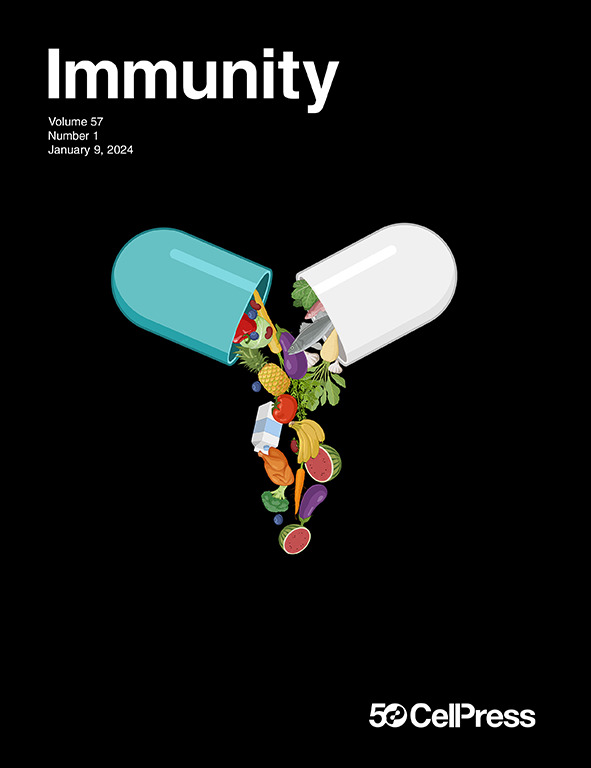A CD4+ T cell-intrinsic complement C5aR2-prostacyclin-IL-1R2 axis orchestrates Th1 cell contraction
IF 26.3
1区 医学
Q1 IMMUNOLOGY
引用次数: 0
Abstract
T helper 1 (Th1) cell initiation pathways are well characterized; however, those regulating their contraction are less understood. Here, we define a CD4+ T cell-autonomous pathway in which complement C5 orchestrated a shift from prostaglandin E2 (PGE2) dominance to enhanced prostacyclin (PGI2) production via activation of C5a receptor 2 (C5aR2). This pivot in lipid mediators induced autocrine signaling through the PGI2 receptor and expression of the interleukin-1 (IL-1) decoy IL-1 receptor type 2 (IL-1R2), which sequestered Th1 cell-driving intrinsic IL-1β, facilitating Th1 cell contraction. Disruption of this C5aR2-PGI2-R axis was a hallmark of pathologically persistent Th1 cell activity in inflammatory conditions, including cryopyrin-associated periodic syndromes (CAPS), Crohn’s disease, and rheumatoid arthritis. Rebalancing this axis through selective PGE2 synthase inhibition rectified the hyperactive Th1 cell phenotype in vitro in T cells from individuals with CAPS. Therefore, complement is a key controller of prostanoid metabolism, and the latter is an intrinsic—and potentially druggable—checkpoint for the cessation of Th1 cell effector responses.

CD4+ T细胞内在补体c5ar2 - prostacyclin1 - il - 1r2轴协调Th1细胞收缩
辅助性T细胞1 (Th1)细胞起始途径已被很好地表征;然而,调控它们收缩的因素却鲜为人知。在这里,我们定义了一个CD4+ T细胞自主通路,其中补体C5通过激活C5a受体2 (C5aR2),从前列腺素E2 (PGE2)的优势转变为增强前列腺素(PGI2)的产生。脂质介质中的这一支点通过PGI2受体诱导自分泌信号传导和白细胞介素-1 (IL-1)诱饵IL-1受体2 (IL-1R2)的表达,其隔离Th1细胞驱动的内在IL-1β,促进Th1细胞收缩。这种C5aR2-PGI2-R轴的破坏是炎症条件下病理学上持续Th1细胞活性的标志,包括冷冻素相关周期性综合征(CAPS)、克罗恩病和类风湿性关节炎。通过选择性PGE2合成酶抑制重新平衡这一轴,在体外来自CAPS个体的T细胞中纠正了过度活跃的Th1细胞表型。因此,补体是前列腺素代谢的关键控制者,而后者是停止Th1细胞效应反应的内在和潜在的药物检查点。
本文章由计算机程序翻译,如有差异,请以英文原文为准。
求助全文
约1分钟内获得全文
求助全文
来源期刊

Immunity
医学-免疫学
CiteScore
49.40
自引率
2.20%
发文量
205
审稿时长
6 months
期刊介绍:
Immunity is a publication that focuses on publishing significant advancements in research related to immunology. We encourage the submission of studies that offer groundbreaking immunological discoveries, whether at the molecular, cellular, or whole organism level. Topics of interest encompass a wide range, such as cancer, infectious diseases, neuroimmunology, autoimmune diseases, allergies, mucosal immunity, metabolic diseases, and homeostasis.
 求助内容:
求助内容: 应助结果提醒方式:
应助结果提醒方式:


